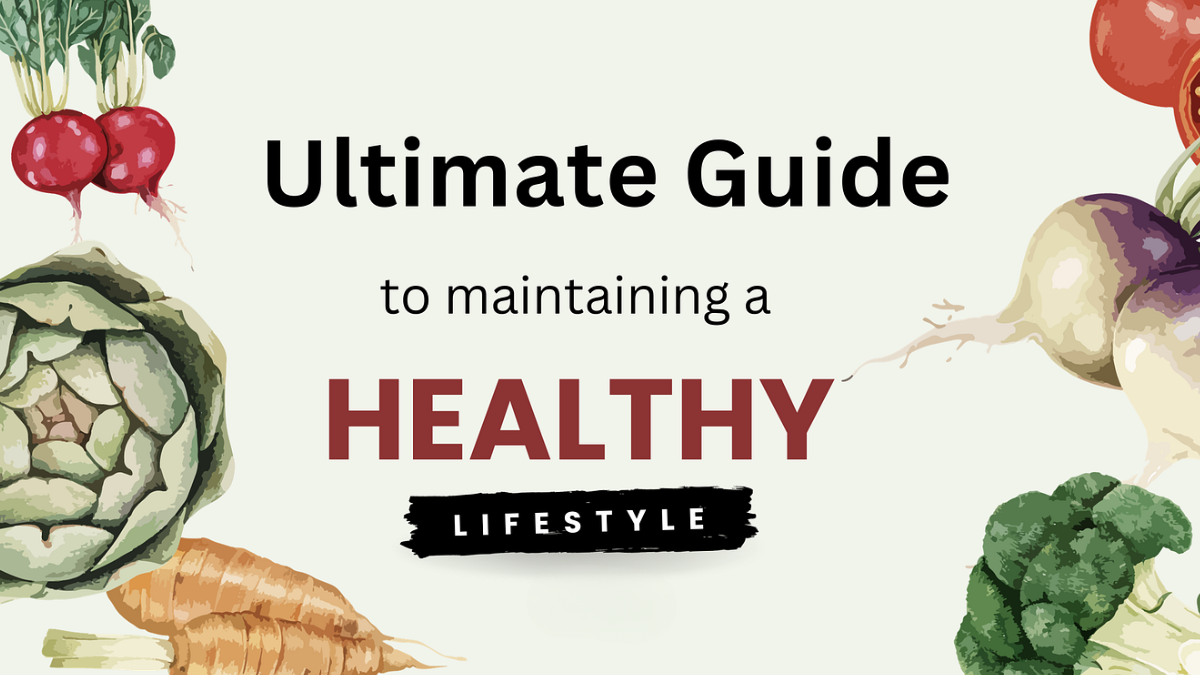Healthy Lifestyle -Maintaining a balanced and healthy lifestyle is more important than ever in today’s fast-paced world. A combination of proper nutrition, regular exercise, mental well-being, and lifestyle choices not only improves longevity but also enhances quality of life. This guide will help you understand the core aspects of a healthy lifestyle, how to incorporate them into daily life, and strategies to maintain balance in both physical and mental health.
Understanding a Balanced and Healthy Lifestyle
A balanced lifestyle involves making conscious choices that promote overall well-being. It encompasses four main areas: physical health, mental health, nutrition, and social well-being. Achieving balance requires understanding your body, mind, and environment.
The Importance of Balance
Balance is not about perfection but sustainability. Extreme diets, over-exercising, or neglecting mental health can harm the body and mind. A balanced approach ensures that each aspect of your health supports the other, creating a stable foundation for long-term wellness.
Key Components of a Healthy Lifestyle
- Physical Activity – Regular exercise strengthens the heart, muscles, and bones, and boosts immunity.
- Nutrition – Consuming a variety of nutrient-rich foods fuels the body and supports optimal function.
- Mental Well-being – Stress management, mindfulness, and emotional balance are critical for holistic health.
- Sleep and Rest – Adequate sleep restores energy, supports cognitive function, and improves mood.
- Social Connections – Strong relationships contribute to emotional stability and life satisfaction.
Nutrition: Fueling Your Body Right
Eating a balanced diet is the cornerstone of a healthy lifestyle. Proper nutrition provides the energy required for daily activities and supports the body’s essential functions.
Understanding Macronutrients
Macronutrients are nutrients your body needs in large amounts:
- Proteins – Build and repair tissues, muscles, and immune function.
- Carbohydrates – Primary energy source; choose complex carbs like whole grains.
- Fats – Essential for brain health, hormone production, and nutrient absorption; focus on healthy fats like avocado and nuts.
Importance of Micronutrients
Vitamins and minerals are crucial for metabolism, immunity, and overall health. Include fruits, vegetables, nuts, seeds, and dairy to meet your micronutrient needs.
Hydration and Its Role
Water supports digestion, circulation, and temperature regulation. Drinking 8–10 glasses of water daily or more depending on activity level ensures proper hydration.
Healthy Eating Habits
- Eat smaller, frequent meals to maintain energy levels.
- Limit processed foods, sugars, and unhealthy fats.
- Include a variety of colors on your plate for different nutrients.
- Listen to your body’s hunger and fullness cues.
Physical Activity: Moving for Health
Exercise is essential for a balanced lifestyle. Regular physical activity improves cardiovascular health, builds strength, and enhances mental health.
Types of Exercise
- Cardiovascular Exercise – Activities like running, swimming, and cycling strengthen the heart and improve stamina.
- Strength Training – Weight lifting or resistance exercises build muscles and support metabolism.
- Flexibility and Balance – Yoga, Pilates, and stretching improve posture, reduce injuries, and enhance mobility.
- Daily Movement – Simple habits like walking, taking stairs, or gardening contribute to overall activity levels.
Recommended Exercise Routine
- Aim for at least 150 minutes of moderate aerobic activity per week.
- Include two or more days of strength training.
- Incorporate stretching or yoga sessions 2–3 times a week for flexibility.
Benefits Beyond Physical Health
Exercise releases endorphins, which reduce stress and enhance mood. It also promotes better sleep and increases energy levels throughout the day.
Mental Well-being: Nurturing Your Mind
Mental health is as important as physical health. Stress, anxiety, and poor emotional management can negatively impact overall wellness.
Stress Management Techniques
- Mindfulness and Meditation – Practice daily mindfulness or meditation to reduce stress.
- Deep Breathing Exercises – Techniques like diaphragmatic breathing calm the nervous system.
- Journaling – Writing thoughts and feelings helps process emotions and identify stress triggers.
Building Emotional Resilience
- Maintain a positive mindset and practice gratitude.
- Set realistic goals and celebrate small achievements.
- Seek professional help when facing prolonged stress or mental health challenges.
Work-Life Balance
- Prioritize time for family, hobbies, and relaxation.
- Avoid overworking and set boundaries between professional and personal life.
- Engage in leisure activities that bring joy and relaxation.
Sleep and Rest: Recharging the Body
Adequate sleep is vital for a balanced and healthy lifestyle. Poor sleep can lead to fatigue, weakened immunity, and cognitive decline.
Tips for Better Sleep
- Maintain a consistent sleep schedule, even on weekends.
- Create a relaxing bedtime routine, such as reading or taking a warm bath.
- Keep your bedroom dark, quiet, and cool.
- Limit screen time at least an hour before bed.
Power of Rest Days
Rest days are essential for recovery, especially after exercise. They prevent burnout, reduce injury risk, and improve overall performance.
Social Connections: Building a Support System
Healthy relationships contribute significantly to well-being. Engaging with friends, family, and community improves emotional stability and life satisfaction.
Importance of Social Bonds
- Reduces stress and feelings of loneliness.
- Encourages healthy habits through accountability.
- Provides emotional support during challenging times.
Ways to Strengthen Connections
- Spend quality time with family and friends.
- Join clubs, groups, or community activities that interest you.
- Practice active listening and empathy in relationships.
Habits for a Balanced Lifestyle
Adopting consistent habits ensures that healthy choices become part of daily life.
Morning and Evening Routines
- Start the day with exercise, a healthy breakfast, and mindfulness.
- End the day with reflection, light stretching, or reading.
Limiting Harmful Behaviors
- Avoid smoking, excessive alcohol, and sedentary habits.
- Monitor screen time and maintain digital wellness.
Setting Achievable Goals
- Focus on small, attainable changes for long-term results.
- Track progress and adjust habits gradually.
Also Read : What Are The Benefits Of Maintaining Good Health And Fitness?
Conclusion
A balanced and healthy lifestyle is achievable through conscious choices in nutrition, exercise, mental well-being, sleep, and social connections. It is not about perfection but sustainability and consistency. By prioritizing your health and building supportive habits, you can enhance longevity, improve quality of life, and ensure overall well-being. Remember, small daily choices compound over time, creating a lasting positive impact on your life.
FAQs
Q1: How can I start a balanced lifestyle if I’m very busy?
Start with small changes, like 10-minute workouts, healthy meal prep, and short mindfulness sessions. Gradually increase as habits form.
Q2: How much exercise is enough for a balanced lifestyle?
Aim for at least 150 minutes of moderate aerobic activity weekly, plus two days of strength training and stretching sessions.
Q3: Can mental health practices really impact physical health?
Yes, stress reduction, mindfulness, and emotional well-being improve sleep, immunity, and cardiovascular health.
Q4: What are simple nutrition tips for beginners?
Include more fruits, vegetables, whole grains, and lean proteins. Drink water regularly and limit processed foods.
Q5: How long does it take to see results from a balanced lifestyle?
Improvements in energy and mood may appear within weeks, while physical fitness and long-term health benefits build over months.





